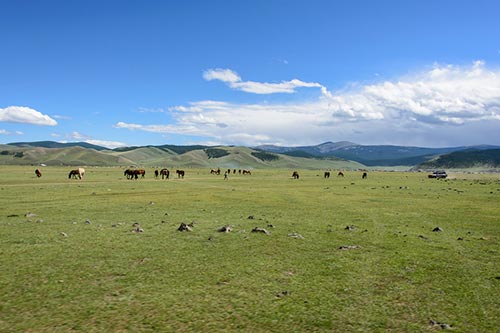

The Orkhon Valley covering an area of 1220 square kilometers (470 sq.miles) is one of the most important cultural regions in the world and was recognized by the UNESCO World Heritage as cultural landscapes in 2004. The extensive area encompasses the pastureland on both banks of the Orkhon river and includes sites such as Kharkhorin, the 13th century capital of Chinggis Khan’s Empire. The archaeological remains collectively reflect the symbiotic relationship between nomadic, pastoral societies and their administrative and religious centers, and the importance of the Orkhon valley in the history of central Asia. The site demonstrates clearly how a strong and persistent nomadic culture led to the development of extensive trade networks and the creation of large administrative, comme...
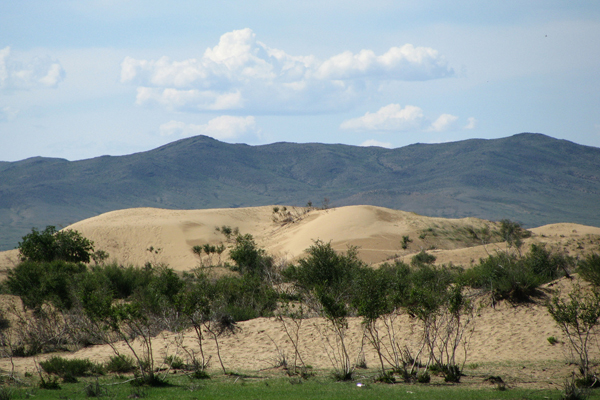

Khogno Khan Natural Reserve covers 46,990 hectares of land and is located in Rashaant county of Bulgan province. The taiga and steppe plants grow in this area and represent two or three different natural zones. This area was taken under state protection in 1997. Khogno Khan, a splendid mountain is situated in the border area of Uvurkhangai, Tuv and Bulgan province. This is a magnificent place with mountains, forests, steppes, Gobi-type desert and mineral water sources all in one location. There are many wild animals such as wolves, deers, foxes and snow leopards inhabited here. In Khogno Khan Natural Reserve, there is an extraordinary sand dunes called Elsen Tasarkhai. "Elsen tasarkhai" is a part of the Great Mongolian Sand dunes and extends about 80 km. The scenery is a perfe...
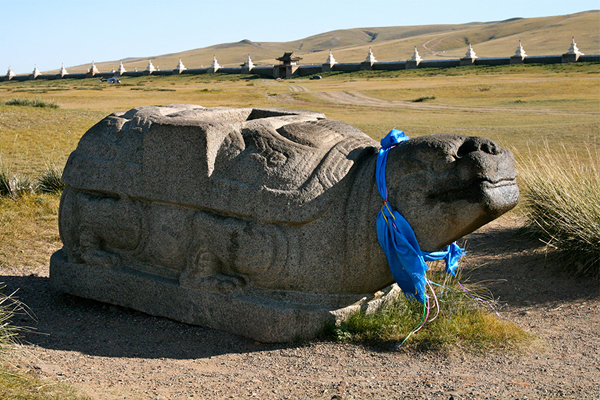

Karakorum, ancient capital of Mongol empire, was established by Chinggis Khan in 1220 in the Orkhon valley at the crossroads of the Silk Road. Karakorum was a busy spindled city with high civilization built by the best artists and masters of antiquity.The ancient capital served as the political, cultural and economic capital of the Mongols for 40 years until Khublai Khan moved it to Khanbalik, in what is now Beijing. Following the move to Beijing, Karakorum was abandoned and then destroyed by the soldiers from Ming Dynasty in 1388. The remains of the capital that stood at the crossroads of the Silk Road are extensive underground archaeological assets and two granite turtles that once stood at the main gate to the city. Four of these turtle sculptures used to mark the boundarie...
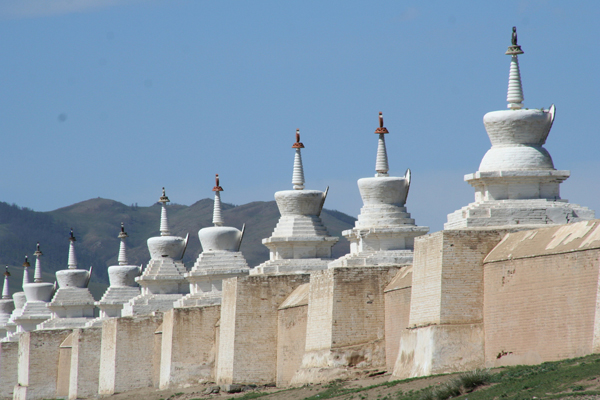

Erdene Zuu Khiid - The first Buddhist monastery called Erdene-Zuu was built on ruins of Karakorum. It was built in 1586 at the initiative of Abtai Khan, most influential Prince of that time in Mongolia.The monastery occupies an area surrounded by a stone wall with 108 stupas lining on it. The Erdene-Zuu monastery preserves marvelous works of Mongolian artists, painters, cutters, sculptors, embroiders and craftsman of the XVII-XIX centuries. It had between 60 and 100 temples, about 300 gers inside the walls and, at its peak, up to 1000 monks in residence. Erdene Zuu Monastery was destroyed by communists in 1930s during the political purge. Suprisingly, many Buddha images and statues, tsam masks and thangkas were saved by locals. The monastery was closed until 1965 and reintroduced as a m...
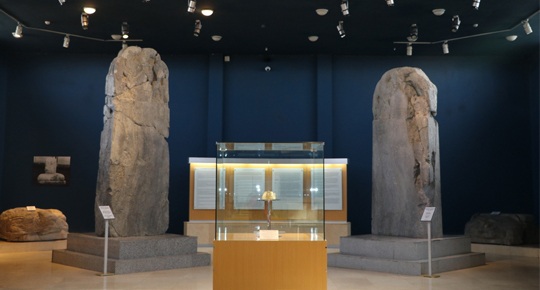

Khushuu Tsaidam Memoral Complex is a Turkic inscribed monument of Turkic Empire. The inscription was written by the grandson of Kultegin and devoted to the Bilge khan of Turkic Empire and his brother Kultegin in 732. Bilge Khan's stele, well khown Orkhon Inscription is 3,3 m high, 1,3 m wide and has 68 rows of inscription. Bilge Khan, who was the latest King of Turkic Empire, ruled its country for 19 years. During the excavation of the memorial in 31th of July 2001, over 2000 finds were revealed and the most important one among them was a gemstone inlaid golden crown of Bilge Khan. There are over 40 runic stele in Mongolia and about 10 of them are located only in Orkhon Valley, that is why it was named Orkhon inscription. These 2 stele of Bilge Khan and Kultegin are 1 km a...
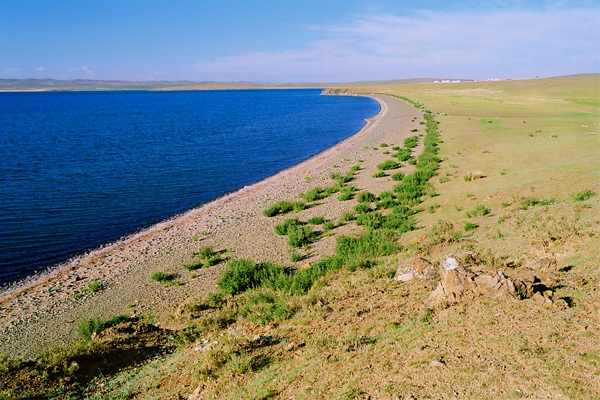

Ogii lake, locates on the centre of Mongolia, in the territory of the Arkhangai province, is one of the biggest lakes of Mongolia and has 27 km squire area. Average depth is 6.64m, in some sections 15.3m, coastal length is 23.5m. The lake abounds in various types of fish and birds, which create an incredible natural beauty. There are 150 sorts of extremely rare and rare species birds of passage come to settle down on the Ogii lake. It is home for cranes and ducks, also Swan Goose, White Spoonbill and Dalmatian Pelican have been recorded. Ogii lake has 14 sorts of fish belonged to the North Atlantic ocean area such as Esoc lucius, Rutilus lacustrisi, Perca fluviatilis, Leucisous idus, Cyprinus carpio haematopterus and so on. Delicate sand and whetstone coast, the soft wave...
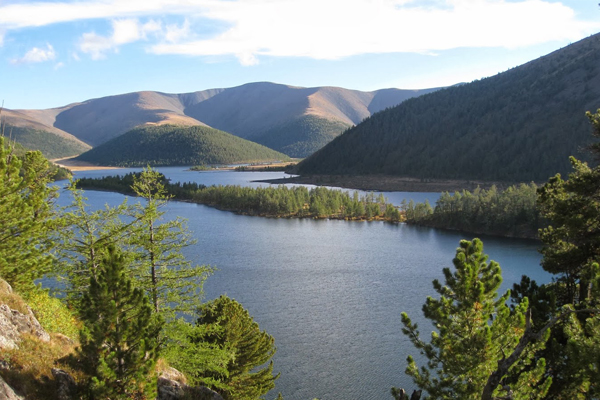

The Khuisiin Naiman Nuur National Monument is located in the Central Mongolian Khangai Mountain range and represents a typical high mountain area of Mongolia with max. The area of Naiman Nuur (Eight Lakes), which was created by volcanic eruptions centuries ago, is located on over 2,400 meters above sea level. The area of 11,500 hectare size was declared a National Monument in 1992. The Eight Lakes area is about 35 km southwest of Orkhon Waterfall, but the roads are often virtually impassible. The lakes are named Shireet, Khaliut, Bugat, Khaya, Khuis, Onon, Doroo and Bayan- Uul. The lakes located in a high mountain area with sub alpine mountain meadows and coniferous forests of Siberian Pine and Siberian Larch, flat valley areas with lava stone fields i...
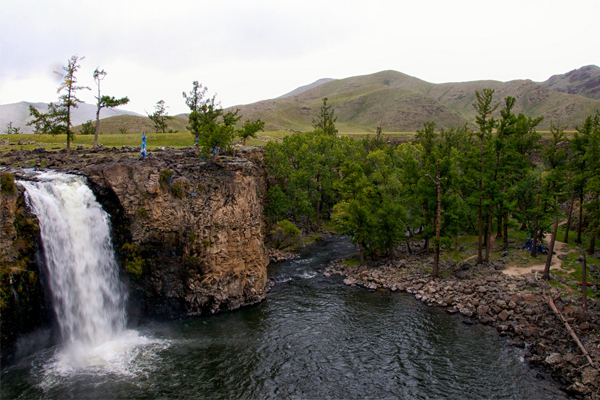

Over 25 m high Orkhon Waterfall is the biggest waterfall in Mongolia and one of the most attractive destination in Orkhon river valley, UNISCO World heritage site. It is located 90 km from Karakorum. The surrounding areas of the waterfall was formed by volcanic activities dated back approximately 20,000 years (possibly Quaternary period). Orkhon is longest river in Mongolia with length of 1124 kilometers (709 miles) and formulates by springs at the numerous mouths of Suvraga Khairkhan a peak of Khangai mountain range. Flows of Orkhon River created a 130 km long canyon through the lava plateau. The area is ideal for fishing, horse riding, cycling and photography. The rivers have handful species of river fish such as pike, sturgeon, hucho taimen, common asp, Siberian grayli...
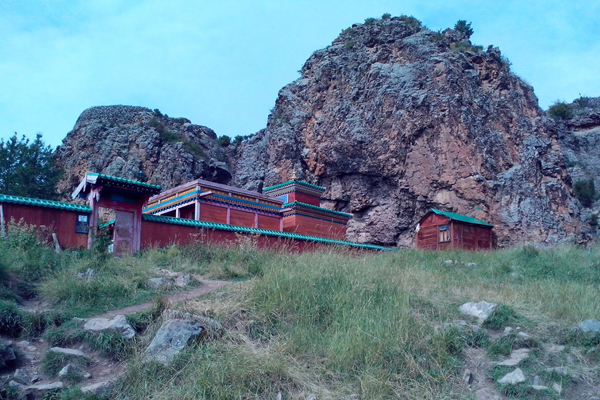

One of most beautiful monastery complex is situated on a forested rocky mountain called Shireet Ulaan, which elevated in 2300 meters above sea level. The monastery was built in 1654 by Saint Zanabazar who was a great sculptor and one of the biggest representatives of Buddhism in Mongolia. Upon his return in 1651 from his first trip to Tibet he had a small walled stone meditation hut built here. 1653, he visited Erdenezuu, founded by his great grandfather, and appeared before a convocation of khalkha nobility. While there he prevailed upon his followers to build temple and retreat at Shireet Ulaan Uul in his own personal use. Later it became worship where many of his famous artworks were created; including five transcendent Buddha's now located in the Zanabazar Fine Art Museu...


The National Park covers 28 sq.km including Togoo Uul which reaches 2240 m above sea level and Hill of Terkhiin Tsagaan Lake. It has been protected since 1965, fully in 1997, to safeguard spectacular mountain scenery and endangered flora and fauna. It's surrounded by the Khangai Mountains, which reach as 3000 meters above the sea level. Khorgo Mountain is dead volcano, which lies east of Terkhiin Tsagaan Lake. The mountain is covered with basalt. The volcano crater of the Togoo Uul is 200 meters wide and 100 meters deep.
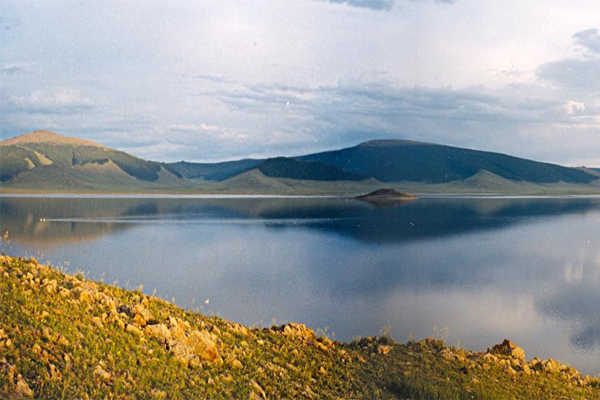

Terkhiin Tsagaan Lake is an astonishingly beautiful lake with relatively pure fresh water. Torrents of lava issuing from the Khorgo volcano blocked the north and south Terkh Rivers, so forming the dammed lake of Terkhiin Tsagaan Lake at an altitude of 2060 meters above sea level. The lake is 16 km wide, 4-10 meters deep with its deepest point at 28 meters and over 20 kilometers in length.
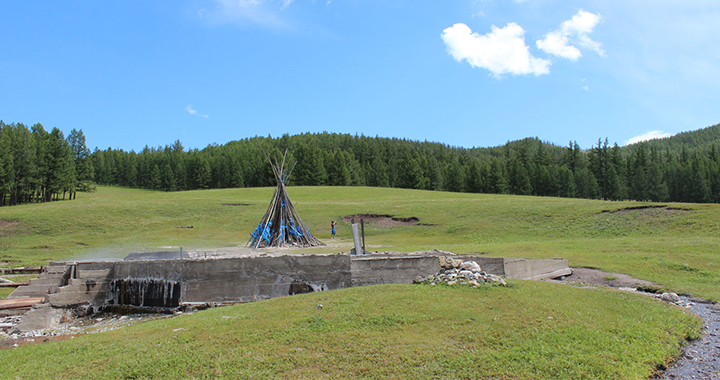

Tsenkher Hor Spring is located in Tsenker Village (soum) of Arkhangai province - Central Mongolia, 450 km from Ulaanbaatar City, 27 km from Tsetserleg town. There are in Arkhangai many old volcanos, which explains the presence of this hot water source that flows all year long at 1860m above the sea level in the soum of Tsenkher. The water is at 85,5°C (185,9°F). In a pleasant verdant wooded area, some Ger camps with equipment and baths with a less hot temperature have been set up for the travelers, but also for the nomads and the inhabitants of Ulan Bator who are very keen on these baths. Tsenkher hot springs have healing properties notably on articular diseases and nervous system’s diseases. Composition: sodium carbonate, hydrocarbonate, sulfate, fluorite, hydrogen sulfid...